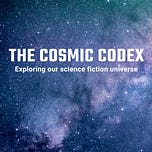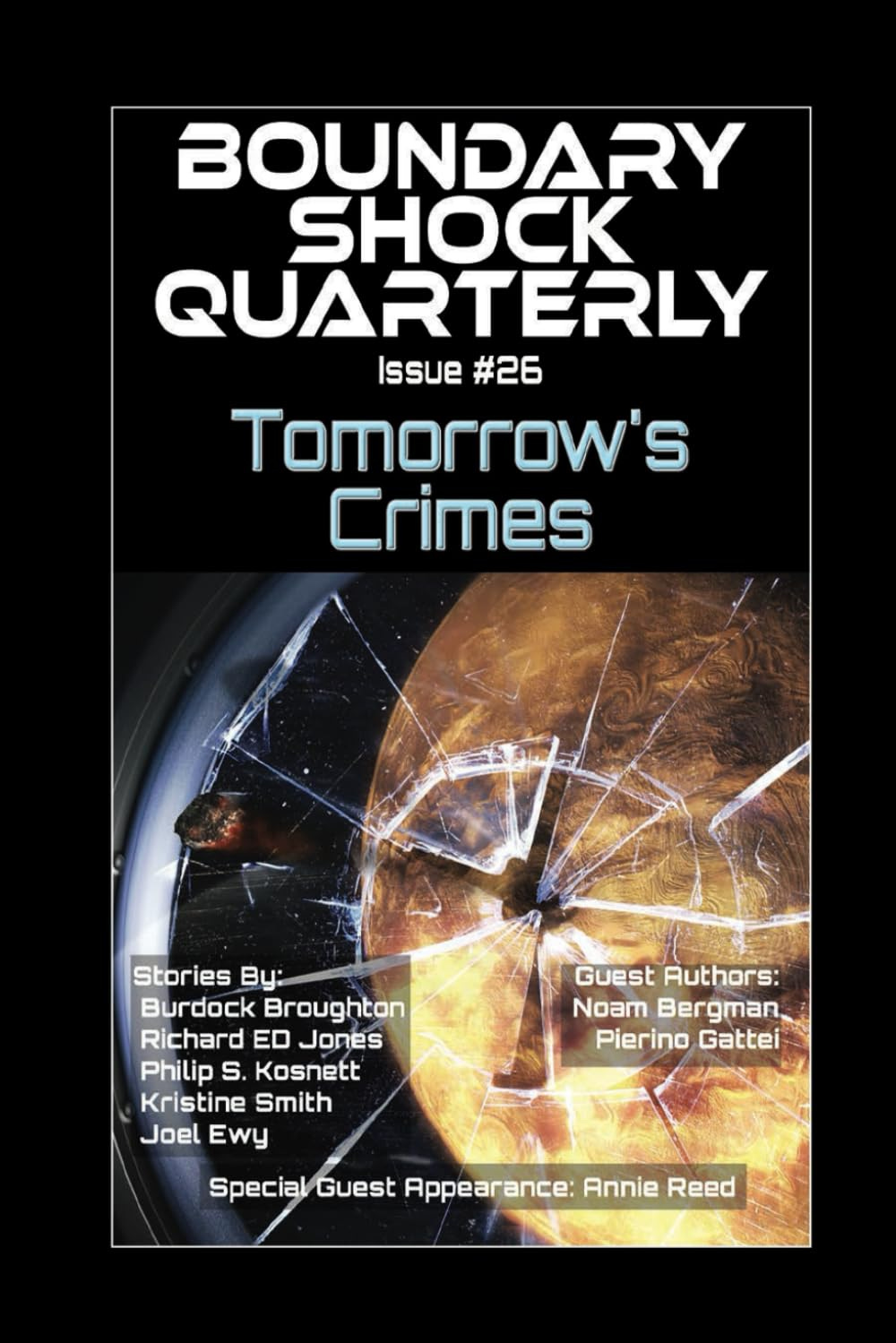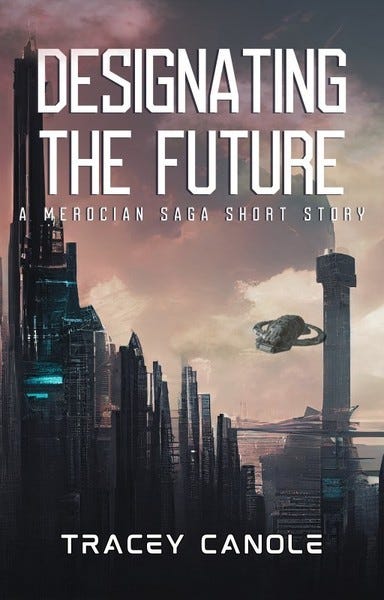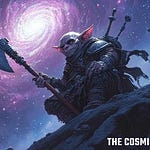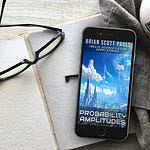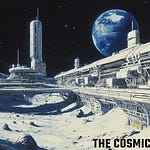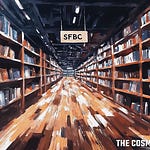
My novelette, An Illicit Mercy, is part of a new promotion in May and June, Science Fiction & Fantasy Reads.
Check out over 75 books available for free.
My latest novelette, “Long Night On the Endless City,” appears in Boundary Shock Quarterly 26: Tomorrow’s Crimes:
On the vast ring habitat Ouroboros, Jel and her synthetic companion Marcus search for Arja, the third member of their triad. This quest leads them to a cryptic technology cult with questionable motives. When they suffer a vicious attack, Marcus and Jel join forces with one of Ouroboros’most renowned computer and robotics experts to get to the bottom of the mystery.
This thought-provoking sf tale explores artificial intelligence, religion, and the ties that bind families together in a fast-paced story full of action, intrigue, and heart.
Get your FREE copy of Designating the Future
The newest colony, Merocius, represents hope for a brighter future, away from the overpopulated Homeworld. But landing a spot on “The Aspire” is difficult.
They need the best of the best on this mission because there’s no room for mistakes. The ship is the largest, the distance the farthest, and the solar system the most unexplored. Nothing can go wrong.
To say they’re being highly selective would be an understatement.
Meet the crew of The Aspire before they find out if their post’s approved and see how close some come to being left behind.
Join my newsletter and get Designating the Future today!
by Brian Scott Pauls with the help of ChatGPT 3.5
The quest to understand the fundamental nature of our universe has been a driving force in human exploration and scientific inquiry for centuries. One of the most intriguing questions that have puzzled scientists and philosophers alike is the true dimensionality of the space we inhabit. While we experience the world in three spatial dimensions, theoretical physicists have proposed the existence of additional dimensions beyond our conventional perception.
A number of science fiction writers have based stories on the concept of additional dimensions:
“‘—And He Built a Crooked House—’” by Robert A. Heinlein
Young, eccentric architect Quintus Teal designs a house based on a tesseract, a four-dimensional geometric shape. However, when an earthquake strikes, the house collapses, but not in the way one might expect. Instead of crumbling to the ground, the structure folds in on itself, creating a bizarre and mind-bending labyrinth of interconnected rooms and corridors. As Teal, his friend Homer Bailey, and Bailey’s wife Matilda explore Teal’s strangely distorted creation, they must grapple with surreal challenges posed by its now four-dimensional shape. With wit and ingenuity, Heinlein crafts a tale that explores the boundaries of perception and reality, challenging readers to rethink their understanding of space and dimensionality.
“Mimsy Were the Borogoves” by Lewis Padgett
This captivating tale, written by C. L. Moore and Henry Kuttner under a pseudonym, begins when a box of futuristic toys from the future is accidentally sent back in time and ends up in the hands of two young siblings, Scott and Emma. Unbeknownst to the children, the toys are designed to enhance intelligence and perception, in part through the understanding of non-Euclidean and multidimensional geometry. As their minds expand and their perceptions shift, the children's newfound abilities lead them to uncover secrets that reshape their understanding of reality. Through its blend of science fiction and fantasy, "Mimsy Were the Borogoves" explores themes of childhood innocence, the nature of intelligence, and the transformative power of imagination.
A Wrinkle in Time by Madeleine L’Engle
This young adult novel is a timeless tale of adventure, courage, and the power of love across the dimensions of space and time. The story follows Meg Murry, her brilliant brother Charles Wallace, and their friend Calvin O'Keefe as they embark on a cosmic journey to rescue Meg's father, a scientist who has disappeared while researching interdimensional travel. Guided by three mysterious beings—Mrs. Whatsit, Mrs. Who, and Mrs. Which—the children traverse the universe, encountering strange worlds and confronting dark forces that seek to enslave entire civilizations. "A Wrinkle in Time" invites readers of all ages to ponder the mysteries of the universe and the infinite possibilities that lie beyond the confines of ordinary reality.
In this article, we delve into the fascinating realm of multidimensional space and explore the various theories that attempt to explain how many dimensions may make up our universe.
The Three Dimensions We Know
Our everyday experience of space is defined by three spatial dimensions: length, width, and height. These dimensions allow us to navigate and interact with the world around us, from the smallest atoms to the vastness of the cosmos. In classical physics, these three dimensions form the foundation of our understanding of space and motion, as described by Sir Isaac Newton's laws of motion and gravity.
Beyond the Third Dimension
However, the limitations of our human perception may only provide a glimpse into the true nature of space. In the early 20th century, Albert Einstein revolutionized our understanding of space and time with his theory of general relativity. According to Einstein's equations, space and time are intertwined, forming a four-dimensional continuum known as spacetime. This concept introduced the idea of a fourth dimension, time, which plays a crucial role in the dynamics of the universe.
The Search for Extra Dimensions
While the concept of spacetime provided a new framework for understanding the universe, modern theories of physics have proposed the existence of additional spatial dimensions beyond the familiar three. One such theory is string theory, which suggests that fundamental particles are not point-like objects but rather tiny, vibrating strings. String theory requires the existence of extra spatial dimensions—10, 11 or even more, depending on the version of the theory—to accommodate its mathematical framework.
Kaluza-Klein Theory
Another influential idea in the search for extra dimensions is the Kaluza-Klein theory, proposed in the 1920s by physicists Theodor Kaluza and Oskar Klein. This theory unifies electromagnetism and gravity by introducing an additional spatial dimension curled up at each point in our three-dimensional space. While these extra dimensions are compactified and invisible at large scales, they could have profound implications for the behavior of particles at the quantum level.
Experimental Evidence and Constraints
Despite the theoretical appeal of extra dimensions, experimental evidence for their existence remains elusive. Particle accelerators such as the Large Hadron Collider (LHC) have searched for signs of extra dimensions by probing for deviations from standard particle physics predictions. So far, these experiments have placed stringent constraints on the size and nature of any potential extra dimensions, ruling out certain scenarios favored by theoretical models.
Brane Worlds and Parallel Universes
In addition to compactified extra dimensions, some theories propose the existence of brane worlds—hypothetical higher-dimensional surfaces or "branes" embedded within a larger multidimensional space. According to these models, our universe may be just one of many branes floating in a higher-dimensional "bulk." The interactions between these branes could give rise to phenomena that appear mysterious or inexplicable within the framework of conventional physics.
Quantum Gravity and Multiverse Theories
The quest to unify quantum mechanics and general relativity—a goal known as quantum gravity—has led to the development of various theories that invoke higher-dimensional spaces. Some of these theories propose the existence of a multiverse, where our universe is just one of countless parallel realities existing within a vast, higher-dimensional landscape. While speculative, these ideas challenge our understanding of reality and the nature of existence itself.
Story possibilities
The various theoretical geometries beyond our known universe of three spatial and one temporal dimension are excellent raw material for new science fiction stories, such as:
"The Folded Universe": Once humanity has mastered the manipulation of higher-dimensional space, a team of explorers embarks on a mission to navigate a mysterious region of space-time known as the "Fold." As they venture deeper into this enigmatic realm, they encounter bizarre phenomena and alien civilizations that defy all conventional laws of physics. Along the way, they must grapple with the existential implications of their journey, confronting questions about the nature of reality, consciousness, and the limits of human understanding.
"The Vault of Croesus": In a dystopian society divided between the elite few who control access to higher dimensions and the impoverished masses relegated to the mundane world of four-dimensional existence, a skilled team of dimension-hackers plans the ultimate heist. Their target? A secure facility where the wealthy hoard technology capable of traversing dimensions. As they infiltrate the facility and navigate through layers of security, they uncover dark secrets about the true nature of the multiverse and the sinister agendas of those who seek to control it. With the fate of infinite worlds hanging in the balance, they must decide whether to use their newfound power for personal gain or to spark a revolution that could reshape the destiny of the cosmos.
"Hyperrise": In a future where humanity has expanded its understanding of space beyond the conventional four dimensions, we begin building trans-dimensional structures. These new "hyperrises" defy traditional concepts of form and function, exceeding in the process the limitations of existing building safety codes. A power failure causes one hyperrise to break free of its foundation in our universe, setting it adrift in a higher dimension. The residents must work together to survive and return home, or perish in the depths of an infinite creation.
The question of how many dimensions may make up our universe remains one of the most profound and intriguing mysteries in science. From the familiar three dimensions of space to the speculative realms of extra dimensions and parallel universes, the quest to unravel the true nature of reality continues to captivate the imagination of scientists and philosophers alike. While experimental evidence may be limited, the exploration of multidimensional space offers a tantalizing glimpse into the potential richness and complexity of the cosmos.
Questions or comments? Please share your thoughts!


